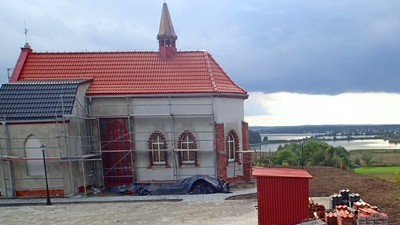The Odra River, which stretches for more than 500 miles through the Czech Republic, Poland, and Germany, has long been a source of food, transportation, and employment for countless settlements that have sprung up along its banks over the centuries.
In July of 1997, more than 20 inches of rain fell in just four days in the region surrounding Wroclaw, Poland - swelling the Odra River and producing one of the worst floods in Poland’s history. The results of this flood were catastrophic: 54 people dead, more than 700,000 homes flooded, and 650 km2 of land inundated with water.
This tragedy exposed the need to update the flood protection system in the area, which had been in place since 1903. In response to this need, the government of Poland began working with the World Bank Group and other international organizations to both rebuild after this disaster and develop a new flood protection system capable of protecting the region against another flood of this magnitude.
Through a series of interventions, The World Bank Group has been working with partners in Poland to help protect more than 2.5 million people against the devastating floods that have defined the Odra River basin over the years. One major component of this work is the Odra River Flood Protection Project - a seven year project, €505 million project being co-financed by the European Union Cohesion Fund, Council of Europe Bank, the World Bank, and the Government of Poland.
Following the completion of the initial phase, which saw the implementation structure for the project put into place and staff training, the project is now moving toward the end of second phase and into the third. Once the appropriate mechanisms for implementation were firmly in place, steps were then taken to secure both the land and the appropriate permits necessary to develop a dry polder - a €218 million “dry” reservoir that will reduce the peak flow of the Odra River and prevent it from merging with the Nysa Klodzka. As part of this process, 1,260 hectares of land have been purchased for the construction of a dike system that stretches for 24 kilometers and outlines the 26km2 Racibórz polder.
It was during this construction phase in July that the President of Poland, Bronisław Komorowski, visited the project. Although this was the first World Bank project the President has visited during his tenure, his visit did not come as a complete surprise. When implementation of this project met with unexpected legal hurdles, it was President Komorowski -acting as both President and the Marshal of lower house of the Polish Parliament - who oversaw the implementation of the special act of 2010, which created a legislative framework that allowed the project to continue unabated.
With the legal framework in place, the third phase of the project was begun early this year and is expected to go through 2017. In addition to the development of the Racibórz polder and the €254 million Wroclaw Floodway System - which includes improving embankments and dikes along the Odra river, reconstructing its river beds, and transferring water from the Widawa river - the new town of Nove Nieboczowy is also being constructed during this final phase to house those families who are being resettled away from the flood zone.
With the relocation of the chapel from its previous location in the flood area to Nove Nieboczowy now complete and several buildings erected – including two homes and the community center – the new town is now beginning to take form and will soon be home to more than 180 families.
The implementation of such a large scale flood mitigation project by the authorities in Poland is helping to send a message to those residents in the area: focusing on prevention, instead of emergency response stop gap measures, will allow them to continue to live and prosper in the region well into the future – without enduring the threat of a flood so common in the past.

